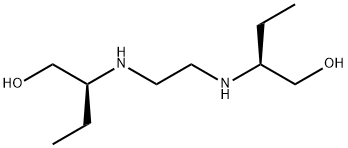(S)-(+)-2-Butanol
Synonym(s):(S)-(+)-sec-Butyl alcohol
- CAS NO.:4221-99-2
- Empirical Formula: C4H10O
- Molecular Weight: 74.12
- MDL number: MFCD00064281
- EINECS: 224-168-1
- SAFETY DATA SHEET (SDS)
- Update Date: 2024-08-12 17:17:06

What is (S)-(+)-2-Butanol?
Chemical properties
Colorless to light yellow liqui
The Uses of (S)-(+)-2-Butanol
(S)-(+)-2-Butanol can be used:
- To synthesize chiral asymmetric perylene diimides (PDI) that spontaneously self-assemble into one-handed nanotubes that are photoconductive or fluorescent in nature.
- To synthesize bulky chiral vinyl monomers that can be radically polymerized to helical polymers with an excess screw sense.
- As chiral solvent to study excited state photo transfer of the photoacid, 5,8-dicyano-2-naphthol (DCN2) in chiral environment.
Definition
ChEBI: (2S)-butan-2-ol is a butan-2-ol. It is an enantiomer of a (2R)-butan-2-ol.
Properties of (S)-(+)-2-Butanol
| Melting point: | -114 °C |
| Boiling point: | 99-100 °C (lit.) |
| alpha | 13 º (neat) |
| Density | 0.803 g/mL at 25 °C (lit.) |
| vapor density | 2.6 (vs air) |
| vapor pressure | 12.5 mm Hg ( 20 °C) |
| refractive index | n |
| Flash point: | 80 °F |
| storage temp. | Sealed in dry,Room Temperature |
| form | Liquid |
| pka | 15.31±0.20(Predicted) |
| color | Clear colorless |
| Odor | at 1.00 % in dipropylene glycol. oily wine |
| optical activity | [α]20/D +13°, neat |
| explosive limit | 9.8% |
| Water Solubility | 125 g/L (20 ºC) |
| Merck | 14,1541 |
| BRN | 1718763 |
| Stability: | Stable. Incompatible with acids, acid chlorides, acid anhydrides, oxidizing agents, halogens. |
| CAS DataBase Reference | 4221-99-2(CAS DataBase Reference) |
| NIST Chemistry Reference | 2-Butanol, (S)-(+)-(4221-99-2) |
Safety information for (S)-(+)-2-Butanol
| Signal word | Warning |
| Pictogram(s) |
 Flame Flammables GHS02  Exclamation Mark Irritant GHS07 |
| GHS Hazard Statements |
H226:Flammable liquids H319:Serious eye damage/eye irritation H335:Specific target organ toxicity, single exposure;Respiratory tract irritation H336:Specific target organ toxicity,single exposure; Narcotic effects |
| Precautionary Statement Codes |
P210:Keep away from heat/sparks/open flames/hot surfaces. — No smoking. P233:Keep container tightly closed. P240:Ground/bond container and receiving equipment. P241:Use explosion-proof electrical/ventilating/lighting/…/equipment. P242:Use only non-sparking tools. P305+P351+P338:IF IN EYES: Rinse cautiously with water for several minutes. Remove contact lenses, if present and easy to do. Continuerinsing. |
Computed Descriptors for (S)-(+)-2-Butanol
(S)-(+)-2-Butanol manufacturer
New Products
(S)-3-Aminobutanenitrile hydrochloride 4-Methylphenylacetic acid N-Boc-D-alaninol N-BOC-D/L-ALANINOL Tert-butyl bis(2-chloroethyl)carbamate 3-Morpholino-1-(4-nitrophenyl)-5,6-dihydropyridin- 2(1H)-one Furan-2,5-Dicarboxylic Acid Tropic acid 1-Bromo-3,5-Di-Tert-Butylbenzene S-2-CHLORO PROPIONIC ACID ETHYL ISOCYANOACETATE 2-Bromo-1,3-Bis(Dimethylamino)Trimethinium Hexafluorophosphate 4-IODO BENZOIC ACID 3-NITRO-2-METHYL ANILINE 1-(2,4-DICHLOROPHENYL) ETHANAMINE (2-Hydroxyphenyl)acetonitrile 4-Bromopyrazole 2-(Cyanocyclohexyl)acetic acid 4-methoxy-3,5-dinitropyridine 1-(4-(aminomethyl)benzyl)urea hydrochloride 2-aminopropyl benzoate hydrochloride diethyl 2-(2-((tertbutoxycarbonyl)amino) ethyl)malonate tert-butyl 4- (ureidomethyl)benzylcarbamate Ethyl-2-chloro((4-methoxyphenyl)hydrazono)acetateRelated products of tetrahydrofuran








You may like
-
 4221-99-2 (S)-(+)-2-Butanol 98%View Details
4221-99-2 (S)-(+)-2-Butanol 98%View Details
4221-99-2 -
 (S)-(+)-2-Butanol CAS 4221-99-2View Details
(S)-(+)-2-Butanol CAS 4221-99-2View Details
4221-99-2 -
 (S)-(+)-2-Butanol CAS 4221-99-2View Details
(S)-(+)-2-Butanol CAS 4221-99-2View Details
4221-99-2 -
 (S)-(+)-2-Butanol CAS 4221-99-2View Details
(S)-(+)-2-Butanol CAS 4221-99-2View Details
4221-99-2 -
 1975-50-4 98%View Details
1975-50-4 98%View Details
1975-50-4 -
 2-HYDROXY BENZYL ALCOHOL 98%View Details
2-HYDROXY BENZYL ALCOHOL 98%View Details
90-01-7 -
 14714-50-2 (2-Hydroxyphenyl)acetonitrile 98+View Details
14714-50-2 (2-Hydroxyphenyl)acetonitrile 98+View Details
14714-50-2 -
 118753-70-1 98+View Details
118753-70-1 98+View Details
118753-70-1
Statement: All products displayed on this website are only used for non medical purposes such as industrial applications or scientific research, and cannot be used for clinical diagnosis or treatment of humans or animals. They are not medicinal or edible.